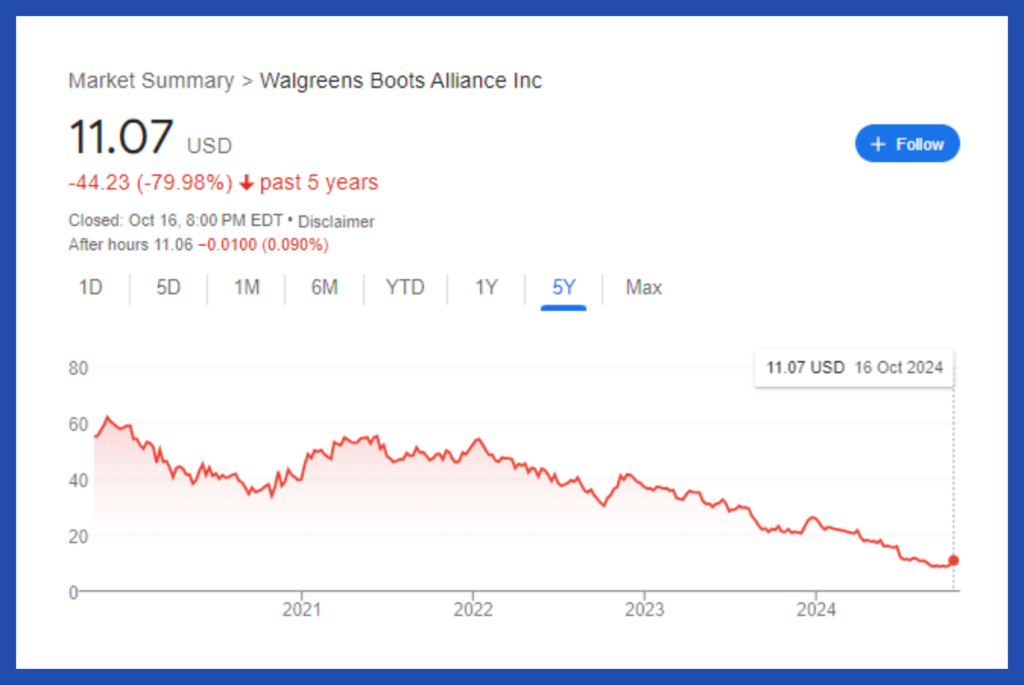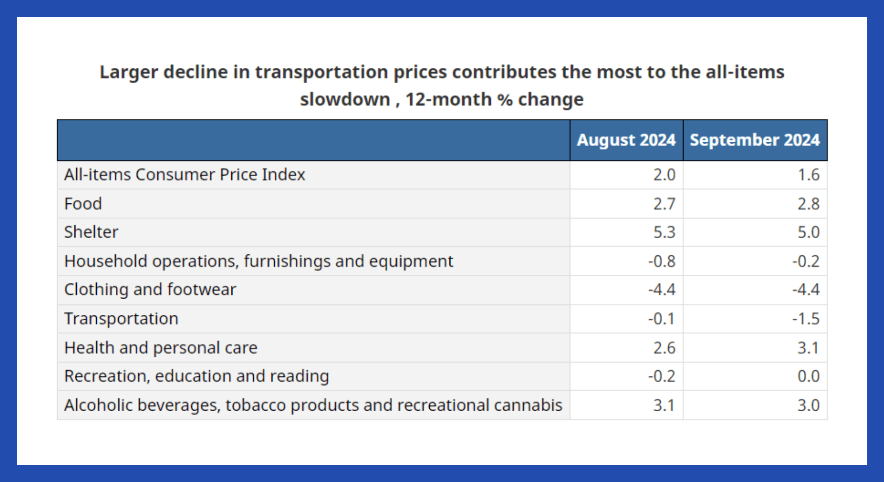Making sense of the markets this week: October 20, 2024
U.S. banks post solid earnings, Walgreens cuts costs, United Airlines is flying high, Netflix still dominates streaming, and Canada’s inflation falls below 2% target.
Advertisement
U.S. banks post solid earnings, Walgreens cuts costs, United Airlines is flying high, Netflix still dominates streaming, and Canada’s inflation falls below 2% target.

Kyle Prevost, creator of 4 Steps to a Worry-Free Retirement, Canada’s DIY retirement planning course, shares financial headlines and offers context for Canadian investors.
It was quarterly earnings time for the big U.S. banks again this week, and all six banks beat earnings expectations. All figures below are in U.S. dollars.
High interest rates cooled off investment banking activity in the past couple of years, but the third quarter saw a reversal of that trend. All six banks reported that investment banking fees, wealth management revenues and equity trading were responsible for their revenue growth.
On the other hand, higher provisions for loan losses and rising expenses dragged down the bottom line for the more retail-consumer-oriented banks.
Given that investment banking revenues led the way, it should be no surprise that JPMorgan and Morgan Stanley shareholders had the most to cheer about this week: they experienced a 7% gain after earnings were announced on Tuesday.
JPMorgan Chase CEO Jamie Dimon gave a characteristically even-handed set of remarks that celebrated the bank’s solid earnings quarter. But he also warned of geopolitical risks that were “treacherous and getting worse.”

Get up to 4.00% interest on your savings without any fees.

Lock in your deposit and earn a guaranteed interest rate of 3.55%.

Earn 3.7% for 7 months on eligible deposits up to $500k. Offer ends June 30, 2025.
MoneySense is an award-winning magazine, helping Canadians navigate money matters since 1999. Our editorial team of trained journalists works closely with leading personal finance experts in Canada. To help you find the best financial products, we compare the offerings from over 12 major institutions, including banks, credit unions and card issuers. Learn more about our advertising and trusted partners.
Morgan Stanley had perhaps the biggest highlight of the week when it revealed its investment banking revenue was up 56% from this time last year.
While Citigroup also saw growth in its investment banking and wealth management revenues, it had the worst day in the group. Despite its earnings beat, shares were down 5.1% at the end of Tuesday’s trading session. This is likely due to the fact that it set aside $315 million for potential credit losses (compared to $125 million for the third quarter of 2023). Bank of America shares were basically flat on the day, and Wells Fargo shares were up slightly. As interest rates trend downwards, the amount of money the banks have to set aside for loss provisions should go down substantially.
While Canadian investors are likely overweight our own Big Six domestic banks, those who have exposure to U.S. banks are doing well this year. The BMO Equal Weight US Banks Index ETF (ZBK/TSX) is up 52% over the last 12 months.
While Johnson & Johnson posted steady earnings results, the talk of the health-care sector this week was Walgreens. All figures below are reported in U.S. dollars.
Dividend darling Johnson & Johnson had an excellent earnings day. Revenue growth was largely attributed to new products in the firm’s Innovative Medicine division. Despite the strong earnings beat, shares were up only 2% on the day.
United Health posted a small earnings beat but saw its stock drop 3.5% on Tuesday after announcing earnings. It appears that high expectations may have played a role, as UNH had raised its annual profitability guidance for the first time in several quarters. That increased guidance was not featured this time around, so the market reaction was slightly negative.
Finally, Walgreens shareholders finally caught a bit of a break this week, as shares were up 24.5% over the previous five days by market close on Wednesday. The solid earnings beat was certainly a factor in the price rise, but perhaps the bigger news was that Walgreens was going to close 1,200 of its 8,700 locations in a bid to become more profitable.
Now, you may be thinking that a 24.5% uptick sounds pretty incredible. To put that number in context, here’s what the five-year chart for Walgreens looks like (and this is after the recent surge).

Source: Google Finance
Clearly, increased competition has taken a real toll on the business model. Walgreens CEO Tim Wentworth stated on the earnings call that the store closures were going to give the chain a “healthier store base” that would “enable us to respond to shifts in consumer behaviour and buying preferences.”
Netflix (NFLX/NASDAQ) shareholders were happy on Thursday, as they saw share prices rise 5% in after-hours trading on the back of another excellent earnings announcement. (All figures in U.S. dollars.) Earnings per share came in at $5.40 (versus $5.12 predicted) and revenues were $9.83 billion (versus $9.77 billion predicted).
Paid memberships also topped expectations, at 282.7 million, compared to the 282.15 million predicted by analysts. Netflix chalked up the increase in viewers to new hit shows such as The Perfect Couple, Nobody Wants This and Tokyo Swindlers, as well as new seasons of favourites Emily in Paris and Cobra Kai. Looking ahead to the next quarter, Netflix is banking on the new season of Squid Game and its foray into the world of live sports. Two National Football League (NFL) games and a massively anticipated boxing bout between Jake Paul and Mike Tyson represent new attractions for the streaming giant.

Tuesday was a massive earnings day for United Airlines (UAL/NASDAQ) as earnings per share came in at $3.33, well outpacing the $3.17 that analysts were predicting. (All figures in U.S. dollars.) Revenues were $14.84 billion (versus $14.78 billion predicted). Shares were up more than 13% on the outperformance and the news that the airline was starting a $1.5-billion share buyback program.
Corporate revenue was up more than 13% year over year, while basic economy seat sales clocked an even more impressive 20% increase. Last week, the company announced new international routes headed to Mongolia, Senegal, Spain, Greenland and more.
It doesn’t seem that long ago that annualized inflation rates were topping 8%, and there appeared to be no end in sight. Well, the end has arrived. Statistics Canada announced this week that the Consumer Price Index (CPI) annualized inflation rate for September had dropped all the way down to 1.6%. That’s substantially lower than the Bank of Canada’s 2% target.
Led by deflation in clothing and footwear, as well as transportation, the downward trend appears to be widespread. Gasoline was also down 10.7% from this time last year.

Source: Statistics Canada
Of course, increased shelter costs remain the major concern for many Canadians. Rent increases were up 8.2% year-over-year; while that’s down from August’s figure of 8.9%, it’s still a bitter pill to swallow for many.
While analysts had expected inflation to continue moving downward, 1.6% was substantially lower than anticipated. This clears the way for another 0.50% interest rate cut when the BoC meets next week. Financial markets have now placed the odds of that cut at 70%.
The BoC will have to weigh the impact of high interest rates on unemployment versus the devaluation of the Canadian dollar relative to its U.S. counterpart when it makes interest rate decisions over the next year. How quickly to cut the Bank’s benchmark rate will likely depend on those two variables more than on inflation—which has clearly been tamed for the time being.
As interest rates follow inflation downward, dividend stocks are likely to get a second look from many investors. You can read about our picks for the Best Canadian Dividend Stocks at MillionDollarJourney.ca.
Finally, I wanted to make sure that everyone is aware that registration has started for the 2024 Canadian Financial Summit. It’s a 100% free online summit, taking place Oct. 23 to 26. Reserve your spot today (first come, first serve). MoneySense’s own Lisa Hannam, Jonathan Chevreau, Jaclyn Law and Michael McCullough are speaking, so don’t miss out.
Share this article Share on Facebook Share on Twitter Share on Linkedin Share on Reddit Share on Email
Great, so housing costs in Canada are going up even more, now, and the dollar is getting worse.